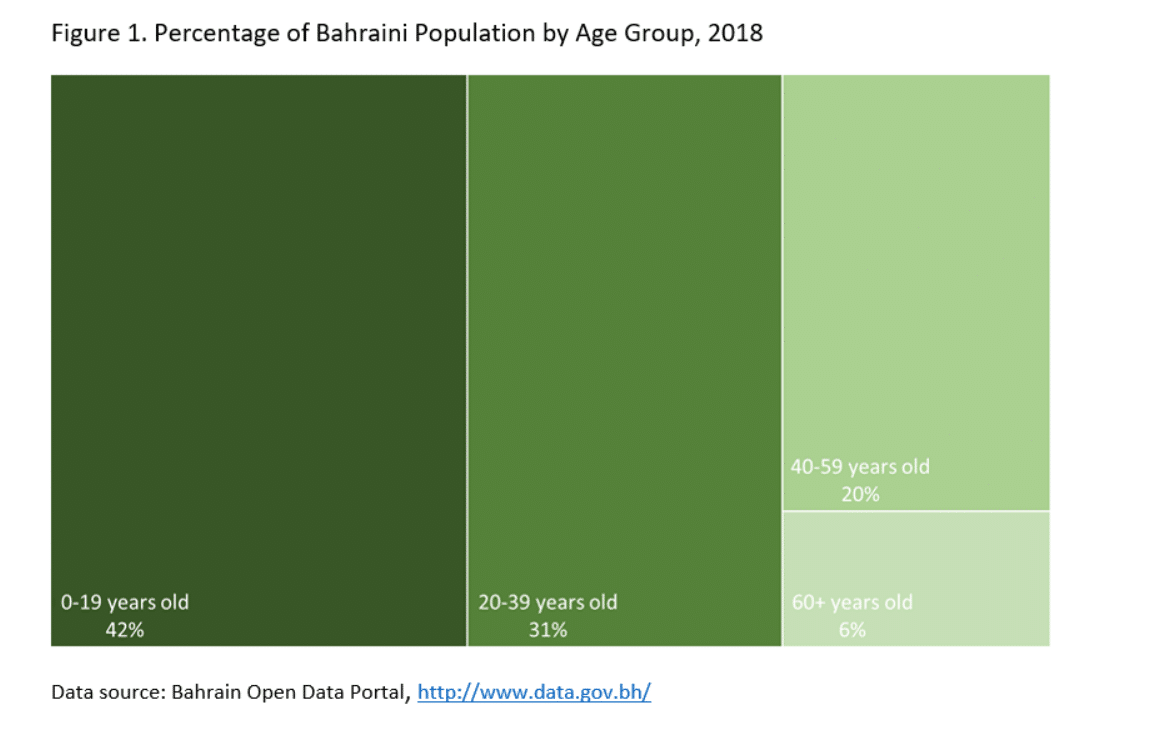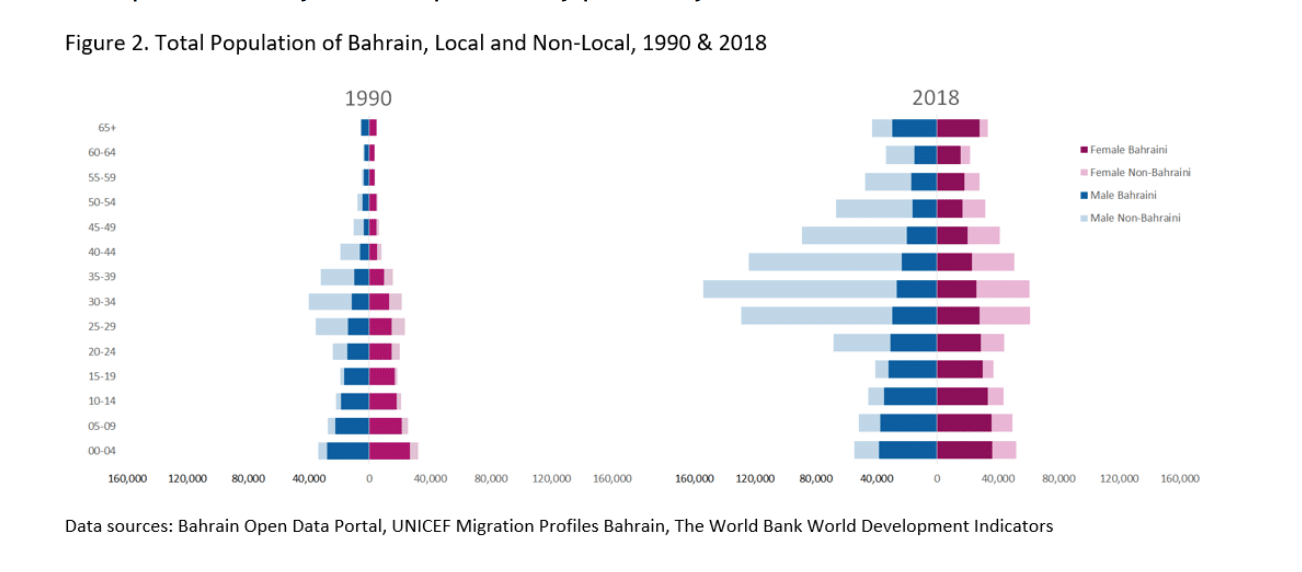If you’re anything like me, you are extremely conscious of the constant progress of time. As you get older, you have to watch what you eat more closely, injuries take longer to heal, you become more aware of the insignificance of your dwindling mortality in the vast abyss of an indifferent universe. We all age. But, existential crises aside for a moment, aging is not only an individual concern. The demographics of a country play a sizeable role in the development its economy and the structure of its markets.
If you look at Figure 1, it is immediately clear how young our local population is. The largest age group, by quite a margin, is children and youth (0-19 years of age), and in fact, almost 60% of Bahrainis are under 30 years old (I make no distinction for gender here, as it is fairly evenly split across all age groups). Naturally, this has major implications for business tastes, trends, and demand overall. Any of you budding entrepreneurs must be aware of this population structure, and how it shapes their target markets (note, however, that this does not consider either the expatriate or GCC tourist populations, both of which are significant in their own ways).

Naturally, this group has a lot of variety – pre-school children are different than school-age children, who are nothing like students in college. Nevertheless, one aspect they all share is that this is a (mostly) non-income-earning group. Spending is done by the family, and – at least in the US, but I suspect in Bahrain too – parental spending on children has only grown over the past several decades. Clothing, entertainment and education are several large sectors that are directly affected by the population of children and teenagers, but their influence likely cascades across much of the market.
Yet, population structures are far from static. As big as the Bahraini 0-19 age group today is, this actually represents a decline over the past 50 years, due to a declining birth rate (which peaked at 7.19 births per woman in 1964 before gradually falling to its current 2.03) and an increasing life expectancy (76.9 years of age in 2016). These factors are leading to a rising bulge up through the population pyramid and will completely transform the country, as wave after growing wave of new entrants age into the labor market over the next decade.
The number of Bahrainis currently employed is approximately 153,000 (for reference, in Q2 2009 – ten years ago – it was 138,000). The number of Bahrainis entering their 20’s in the next decade is 130,000. Conservatively assuming 40% of those won’t want to work, and netting out about 28,000 workers who will likely retire by then, that still means that we will need to create 50,000 net new jobs in the next ten years, more than three times the 15,000 we created in the last decade. Whether viewed as a challenge or an opportunity, this will clearly re-shape the country’s landscape in a way previously unseen.

Another important shift is also occurring on the other end of the pyramid. As older generations of Bahrainis have (thankfully) continued to live longer and age, seniors (60+ years old) now represent the fastest growing age group (Figure 2). Even though they still make up a small fraction of the total, between 2010 and 2018, the number of seniors grew by 60%, compared to 21% for the population as a whole. Looking forward, that rate will only become even faster, leading to sharp increases in the number of our elderly. For you business-minded folks, expect this to spur demand for health care and social services.
Yet, the most dramatic change has been the rise in our migrant population, especially since the turn of the century. The number of migrants first surpassed the local population in 2008, with their share continuing to inch upwards ever since (now at 54%). This comes with its own set of challenges and opportunities, as these workers have fueled much of the economic growth in the country. We all benefit from their hard work; employers capture the wage differential as profits, and services can be offered at lower costs than what otherwise be the case. Migrants fill occupations that may not be desirable to locals. However, such rapid population growth can overwhelm infrastructure channels, and workers themselves can be at risk of abuse and neglect – across the world, immigrants have been blamed for bad policymaking.
To conclude, we should not underestimate how much of a role demographics play in our society, shaping our households, neighborhoods and workplaces. The Information & eGovernment Authority projects that, by 2028, Bahrain’s population will surpass two million – double what it was in 2007. A deeper, more thoughtful understanding of what this means and how this will influence our lives is necessary to continue driving development for all.

